Invented by Jiangchun Xu, Davin C. Dillon, Jennifer L. Mitcham, Susan L. Harlocker, Yuqiu Jiang, Robert A. Henderson, Michael D. Kalos, Gary R. Fanger, Marc W. Retter, John A. Stolk, Craig H. Day, Thomas S. Vedvick, Darrick Carter, Samuel X. Li, Aijun Wang, Yasir A. W. Skeiky, William T. Hepler, John Hural, Patricia D. McNeill, Raymond L. Houghton, Carlota Vinals Y De Bassols, Teresa M. Foy, Yoshihiro Watanabe, Madeleine Joy Meagher, Ta Deng, Corixa Corp
Prostate-specific polynucleotide compositions are a type of nucleic acid-based therapy that targets prostate cancer cells specifically. These compositions are designed to bind to and inhibit the activity of genes that are overexpressed in prostate cancer cells. This can lead to the suppression of tumor growth and the induction of cancer cell death.
The market for prostate-specific polynucleotide compositions is expected to grow significantly in the coming years. This is due to several factors, including the increasing incidence of prostate cancer, the growing demand for personalized medicine, and the development of new and innovative therapies.
One of the key drivers of the market is the increasing incidence of prostate cancer. As the population ages, the number of men diagnosed with prostate cancer is expected to rise. This has led to a growing demand for effective diagnostic and therapeutic options for the disease, including prostate-specific polynucleotide compositions.
Another factor driving the market is the growing demand for personalized medicine. Prostate-specific polynucleotide compositions are a type of precision medicine that is tailored to the individual patient’s genetic makeup. This personalized approach has been shown to be more effective than traditional, one-size-fits-all treatments.
Finally, the development of new and innovative therapies is also driving the market for prostate-specific polynucleotide compositions. Researchers are constantly developing new and improved therapies that target specific genes and pathways involved in prostate cancer. These therapies have the potential to be more effective and have fewer side effects than traditional treatments.
In conclusion, the market for prostate-specific polynucleotide compositions is expected to grow significantly in the coming years. This is due to several factors, including the increasing incidence of prostate cancer, the growing demand for personalized medicine, and the development of new and innovative therapies. As research in this area continues to advance, we can expect to see even more effective and targeted treatments for prostate cancer in the future.
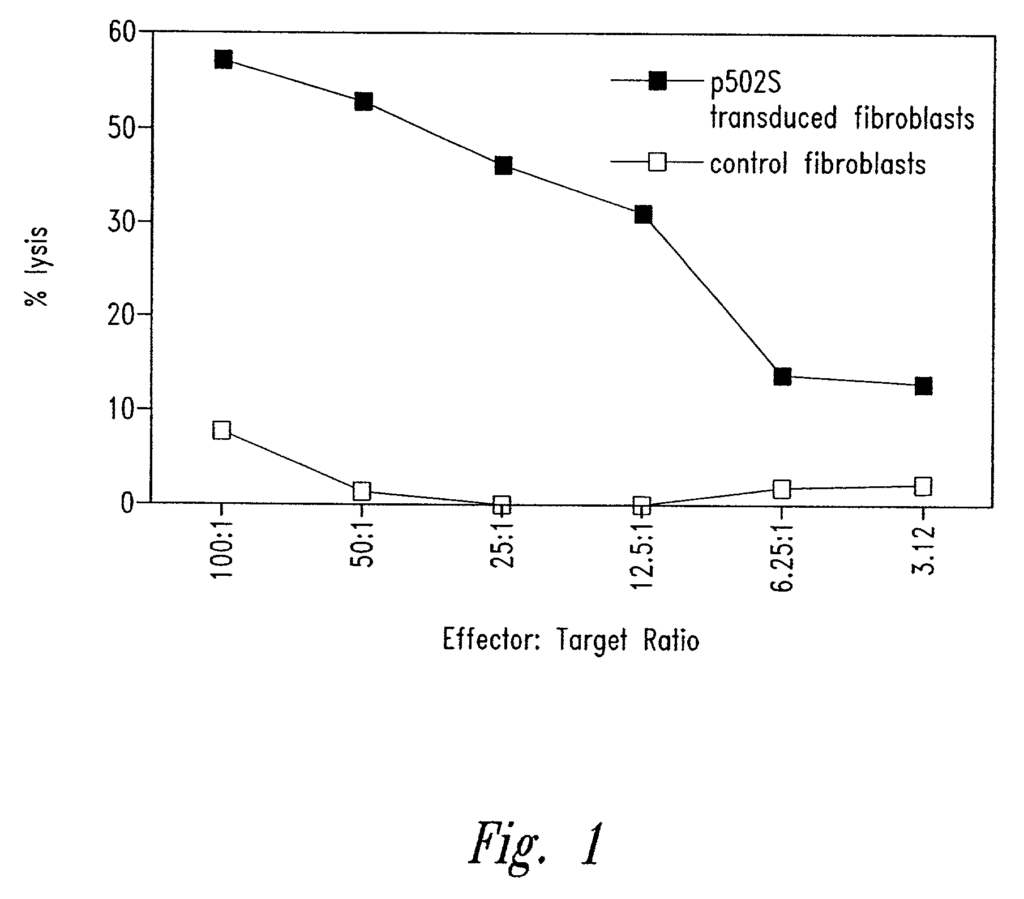
The Corixa Corp invention works as follows
Compositions and methods are disclosed for the treatment and diagnosis of prostate cancer and other cancers. Illustrative formulations include one or more polypeptides specific to prostate, immunogenic portions of these polypeptides and polynucleotides encoding such polypeptides. They also contain antigen-presenting cells that express such polypeptides as well as T cells that recognize cells expressing polypeptides. Compositions disclosed are useful for the treatment, prevention, and/or diagnosis of diseases.
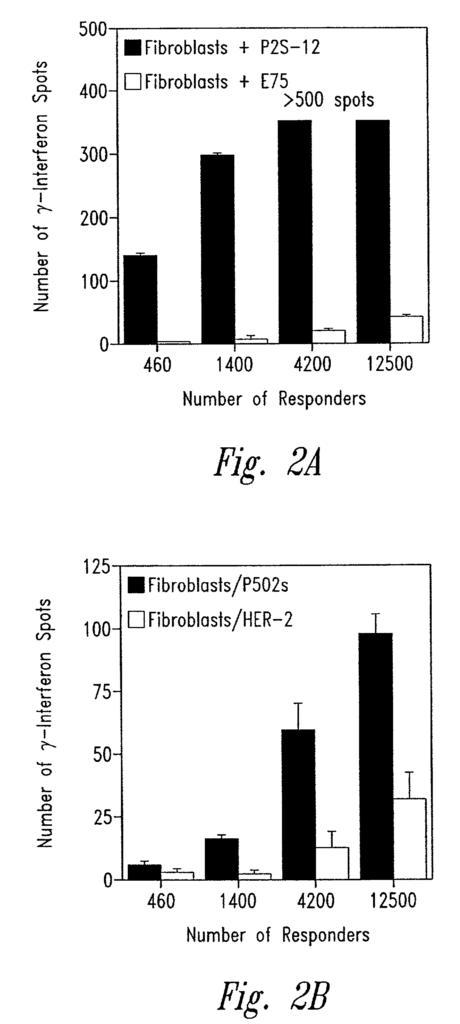
Background for Prostate-specific Polynucleotide Compositions
1. “1.
The present invention is a general therapy and diagnostic tool for cancers such as prostate cancer. The invention is related more specifically to polypeptides that contain at least a portion a prostate-specific proteins, and polynucleotides that encode such polypeptides. These polypeptides are used in pharmaceutical compositions such as vaccines and other compositions to diagnose and treat prostate cancer.
2. “2.
Cancer is an important health problem around the globe. Despite advances in cancer detection and treatment, there is no universally effective method of prevention or treatment. The current therapies, which generally combine chemotherapy, surgery, and radiation, are inadequate for many patients.
Prostate cancer is the leading form of cancer in males over 50 years old. Clinical evidence suggests that prostate cancer in humans is more likely to spread to the bone. The disease also appears to progress from an androgen-dependent to an androgen-refractory state, increasing patient mortality. This common disease is the second most common cause of cancer deaths among men in the U.S.
Prostate cancer is difficult to treat despite extensive research on therapies. Treatment is usually based on radiation or surgery, but this method is ineffective in many cases. The therapeutic and diagnostic value of two previously identified prostate-specific proteins, PSA and PAP, is limited. PSA levels, for example, do not always correlate with prostate cancer. They are positive in some cases of benign prostatic hyperplasia, as well as other conditions. PSA measurements are also correlated with the prostate volume and do not indicate metastasis levels.
Despite extensive research into treatments for these and other types of cancer, prostate cancer is still difficult to diagnose and effectively treat. There is therefore a need for improved methods of detecting and treating cancers. “The present invention meets these needs, and also provides other benefits related to them.
In one aspect, this invention provides polynucleotide compounds that contain a sequence chosen from the following:
(a) sequences in SEQ ID No: 1?111?173, 173?175, 180?193, 179?307, 307?315, 330?335?335, 340 and 385?375?476, 524?526?530, 531, 531?533, 535?536, 552, 569, 592?587, 618?705, 618?705, 704?774, 789?777, 789?817, 823?581, 893?606?606,?706,???????????????????????????????????????????????,?? 8??????6????????????????????????????
(b), complements of the sequences in SEQ ID No: 1?111?171, 173-?175, 177?179?305?381, 381, 382?375?476?524?526?530?531, 531?533, 535?536, 552, 569, 592, 587, 618, 705, 618?705, 817, 802, 823, 424, 878?882, 894?896?, 907?908?90?90?9?8?8?80?
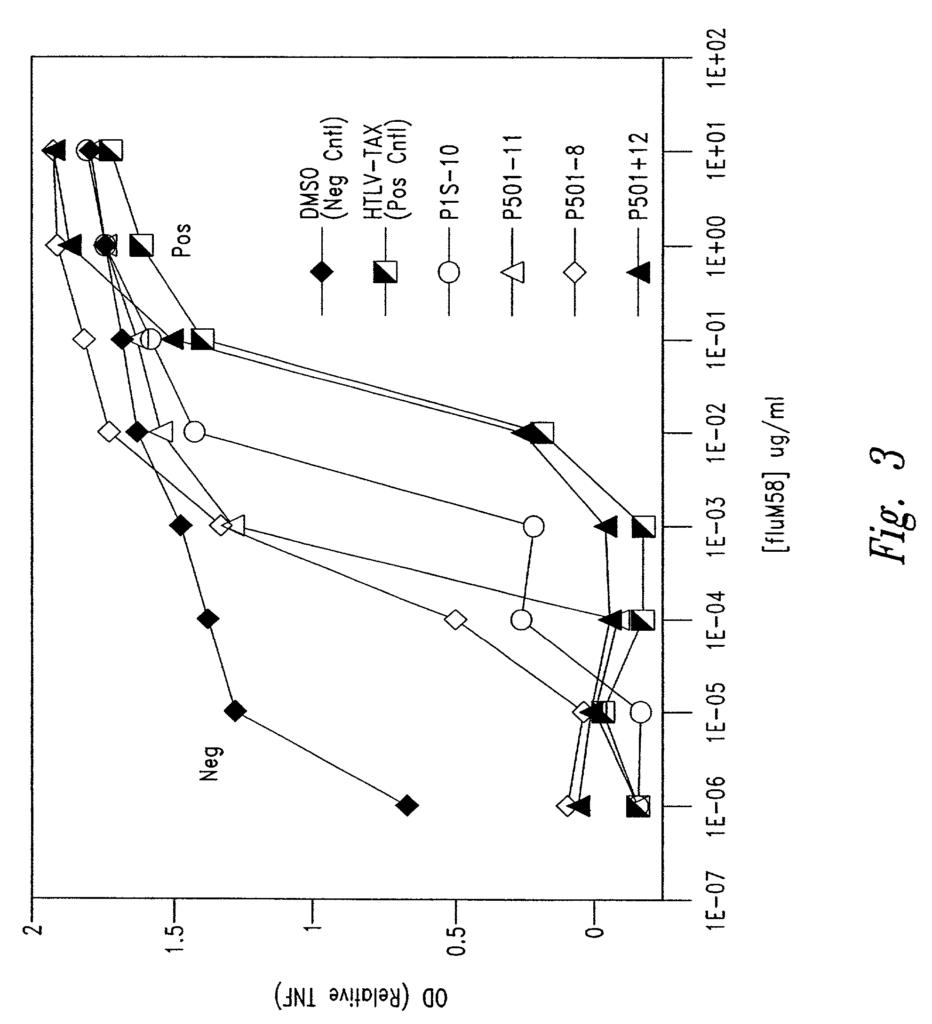
(c), sequences consisting at least of 20 contiguous residues from a sequence as provided in SEQ ID No: 1?111?171, 173-179?305?524?532, 569572, 587591?606, 618705, 709774, 777?789, 817?823, 824?, 878?, 880?882, 888?, 894?, 896?, 907?908, 916
(d), sequences that are hybridized to the sequences provided in SEQ ID No: 1?111?173, 173?175, 181?175, 307?315, 305?326?328, 330?335?335, 340-375?381, 381, 382?375?476?524?536, 569?572, 530?531, 533?535?536?552, 552, 569572, 587?591?593?606?606?606?6?47?4?47?5?5??5??5?5??5?5?5?5?5?5?5?5?5?5?5?5?5?5?5? 5?5?5?5?5?5?5?5?5?5?5?5??5?5?5?5?5??5??5??????????????????????????????6???????????????????????
(e) sequences with at least 75% similarity to the following sequences: SEQ ID No. 1?111?171, 115?175, 173?175, 307?315, 310, 326?328, 330?335?345?375, 381, 382, 382?375, 340?375?476?524?526?530, 531, 531?533, 535?536, 552, 569572, 587?591?591?536?536?5?5?5?5?4?384?375?384?384,?384,??4?3?3?384,??384,??????3??5?5?4?5?5?5?5?5?5?5?5?5?5?5?5?5?5?5? 593?5?5?5?5?5?6??4???????????????4???????4?????????????????????????????
(f) sequences with at least 90% identity to the sequences of SEQ ID No: 1?111?171, 173-179?305?524?526?530?531, 535?536?552, 569572, 587591, 593606, 618705, 709774, 777?789, 817?823, 824?878?882, 894?896?907, 907?908, 916?919
(g), degenerate variations of a sequence as provided in SEQ ID No: 1?111?173, 173?175, 181?307, 307?315, 177?179?305?524?526?530?531, 533?535, 535?536, 552, 569572, 587?591?606, 618705, 709774, 777?789, 817?823, 824?, 878?882, 880?882,???
In one preferred embodiment, polynucleotide compounds of the invention were expressed in at the very least 20% of prostate tissue samples, but more preferably, in at the very least 30%. Most preferably, they were expressed in about 50%, with a concentration that was at least 2-fold higher, preferable at about 5-fold and most preferably, at about 10-fold greater than for normal tissues.
In another aspect of the invention, polypeptide compositions are provided that contain an amino acid coded by a sequence of polynucleotides described above.
The present invention also provides polypeptides composed of an amino acid sequence chosen from the group consisting SEQ ID No: 112?114; 172?176; 178; 327?329; 336?477, 496?504, 519?520, 525?527?531, 553?568, 583-668, 588?590?592, 811?814?818?853, 855?862, 860?862, 879?883?893, 883?
In certain preferred implementations, polypeptides or polynucleotides are immunogenic. They are capable of eliciting a response immune, in particular a humoral response and/or cellular immune response as described further herein.
The
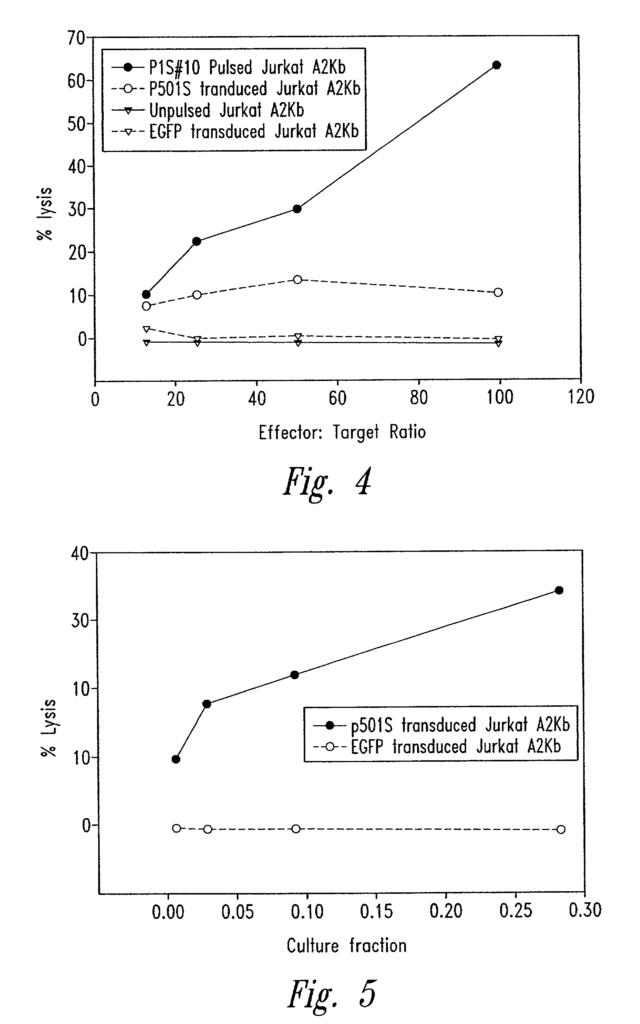
The present invention also provides polynucleotides encoding a polypeptide as described above, expression vectors containing such polynucleotides, and host cells that have been transformed or transfected using such expression vectors.
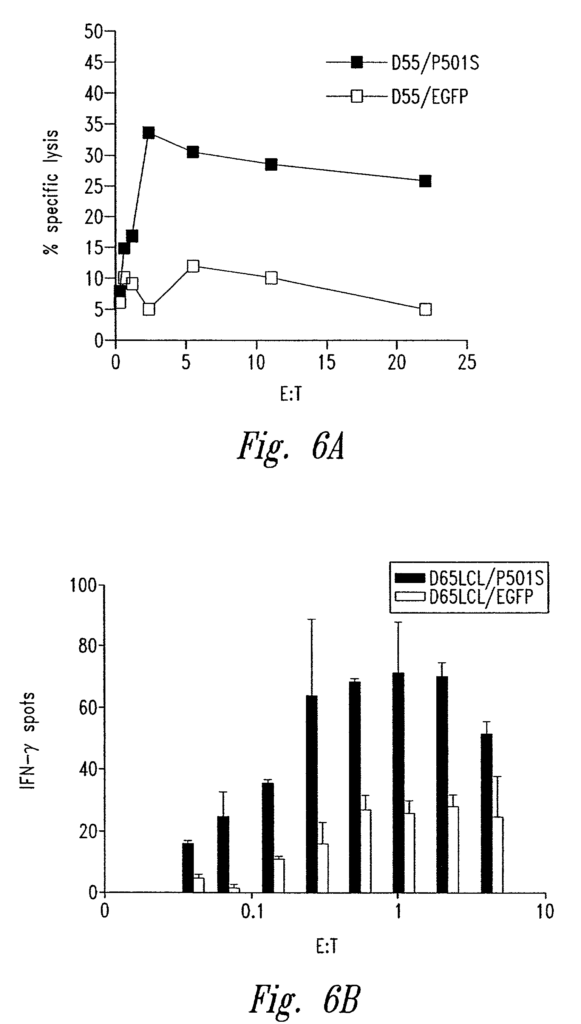
Click here to view the patent on Google Patents.
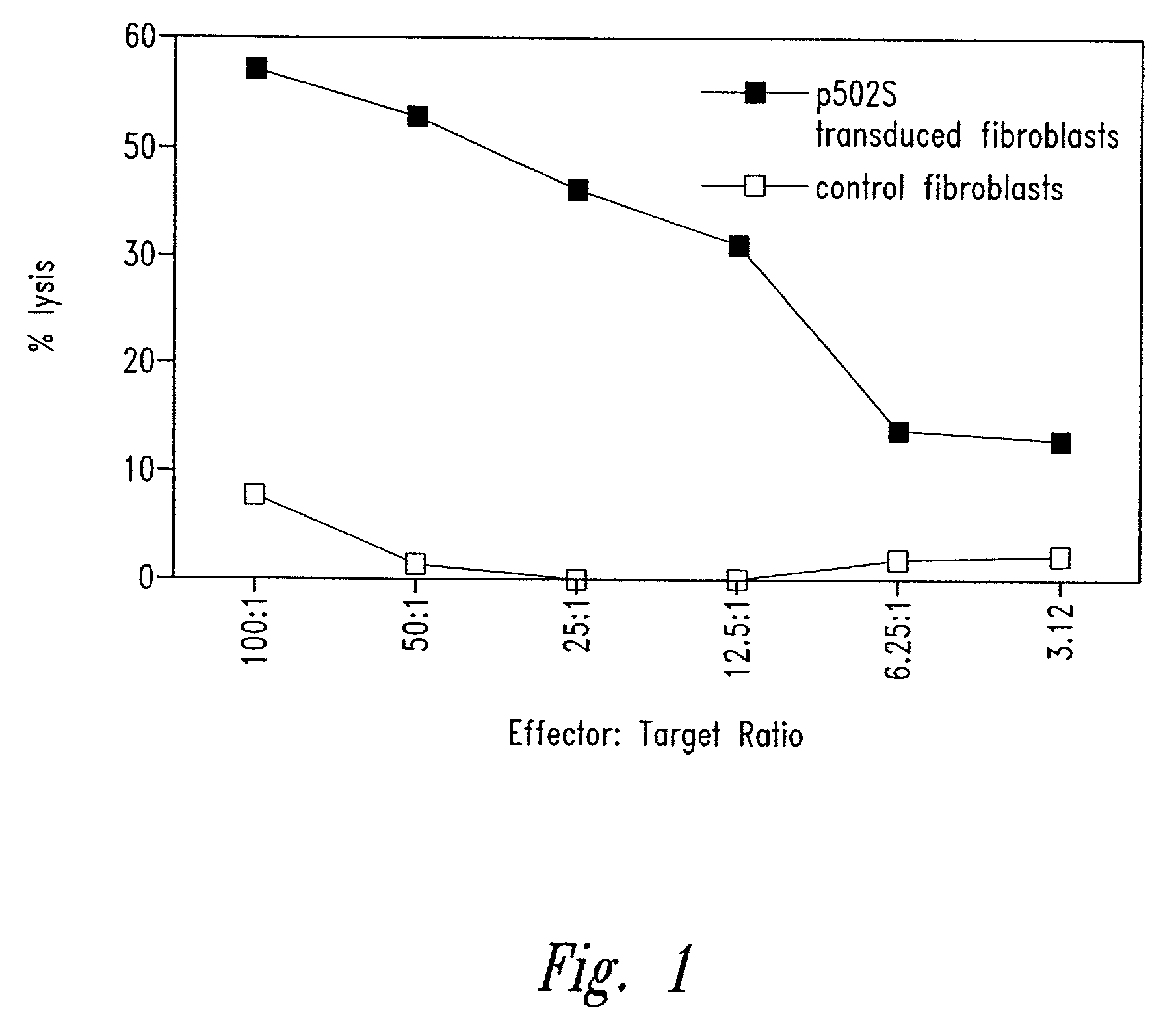
Leave a Reply